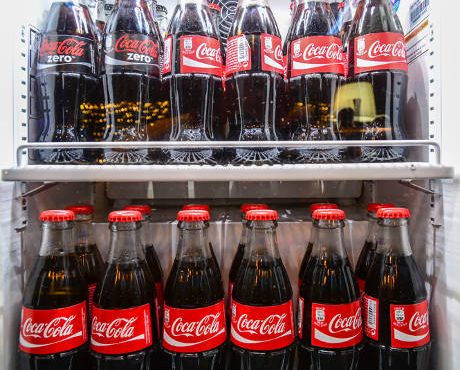Coca-Cola Stock Still a Winner for Income Investors
For many income investors, The Coca-Cola Co (NYSE:KO) stock has long been a staple, and among the loyal followers of the soda giant is legendary investor Warren Buffett. Buffett once said that he consumes about 700 calories of Coke a day, and that he is, “about one-quarter Coca-Cola.” (Source: “Buffett defends Berkshire’s big Coke stake,” CNBC, May 2, 2016.)
Buffett’s liking to the sugary drink is reflected in the holding of his company Berkshire Hathaway Inc. (NYSE:BRK.B). By the end of the second quarter, Buffett’s firm owned a whopping 400 million shares of Coca Cola, worth approximately $18.1 billion at the time. (Source: “Form 13F Information Table,” U.S. Securities and Exchange Commission, August 15, 2016.)
Most recently though, sentiment hasn’t been that great surrounding the century-old soda giant. Year-to-date, Coca Cola stock slipped just under one percent.
So, does Coke stock still deserve a spot in an income investor’s portfolio?
The answer is yes, and here’s why.
First of all, “Mr. Market” can be quite emotional at times, so we shouldn’t judge a stock by a few months of performance. Besides, if you have been a longtime investor of KO stock, you know that there are things just as important as capital gains: dividends.
Coca-Cola stock has one of the best track records when it comes to dividends. The company has paid a quarterly dividend since 1920 and has increased dividends in each of the last 54 years. That makes KO stock a “dividend king,” a title reserved for companies that have paid increasing dividends for 50 or more consecutive years.
The latest dividend hike came this February, when the company increased its quarterly dividend rate by six percent to $0.35 per share. At today’s price, KO stock has an annual dividend yield of 3.29%. In the past 10 years, the company’s quarterly dividend rate has more than doubled. (Source: “The Board of Directors of The Coca-Cola Company Announces 54th Consecutive Annual Dividend Increase,” The Coca-Cola Co, February 19, 2016)
Coca-Cola’s track record in raising dividends reflect the company’s competitive advantage. In Buffett’s language, the company has wide economic moats to protect its profits from competitors. And those wide economic moats come from Coke’s brand power.
To see just how powerful the brand name is, here’s a number: 1.9 billion. That’s the number of servings of Coca-Cola’s beverages consumed every single day. The company also has the world’s largest beverage distribution system, serving consumers in more than 200 countries.
Of course, no company is perfect. And for KO stock investors, the concern is that as people embrace the health and wellness trend, sugary sodas won’t be popular anymore.
However, note that “Coke,” “Sprite,” and “Fanta” are not the only drivers behind Coca-Cola stock’s success. The company also controls well-known juice brands including “Simply” and “Minute Maid.” At the same time, it also owns tea and water brands such as “Dasani,” “Powerade,” and “Vitamin Water.” In total, Coca-Cola has a portfolio of more than 500 brands, 20 of which generate more than $1.0 billion a year in sales. Among those 20 brands, 14 are non-carbonated.
The beverage industry doesn’t make headlines as often as, say, the Internet industry, but that doesn’t mean there is no growth. According to Transparency Market Research, the global non-alcoholic beverages market is expected to expand at a 4.3% compound annual growth rate (CAGR) between 2014 and 2020 and reach $1937.73 billion by 2020. (Source: “Non-Alcoholic Drinks Market to reach $1937.73 billion by 2020 – Global Industry Research Review 2015/2016 & Outlook 2020,” GlobeNewswire, May 12, 2016.)
The Bottom Line on KO Stock
At the end of the day, keep in mind that Coca Cola is in the consumer staples business. Consumers might not be buying new cars when times are tough, but they are probably still going to drink Coca-Cola and Minute Maid. With a strong portfolio of brands, a recession-proof business, and a track record of dividend hikes, KO stock still deserves the attention of income investors.
